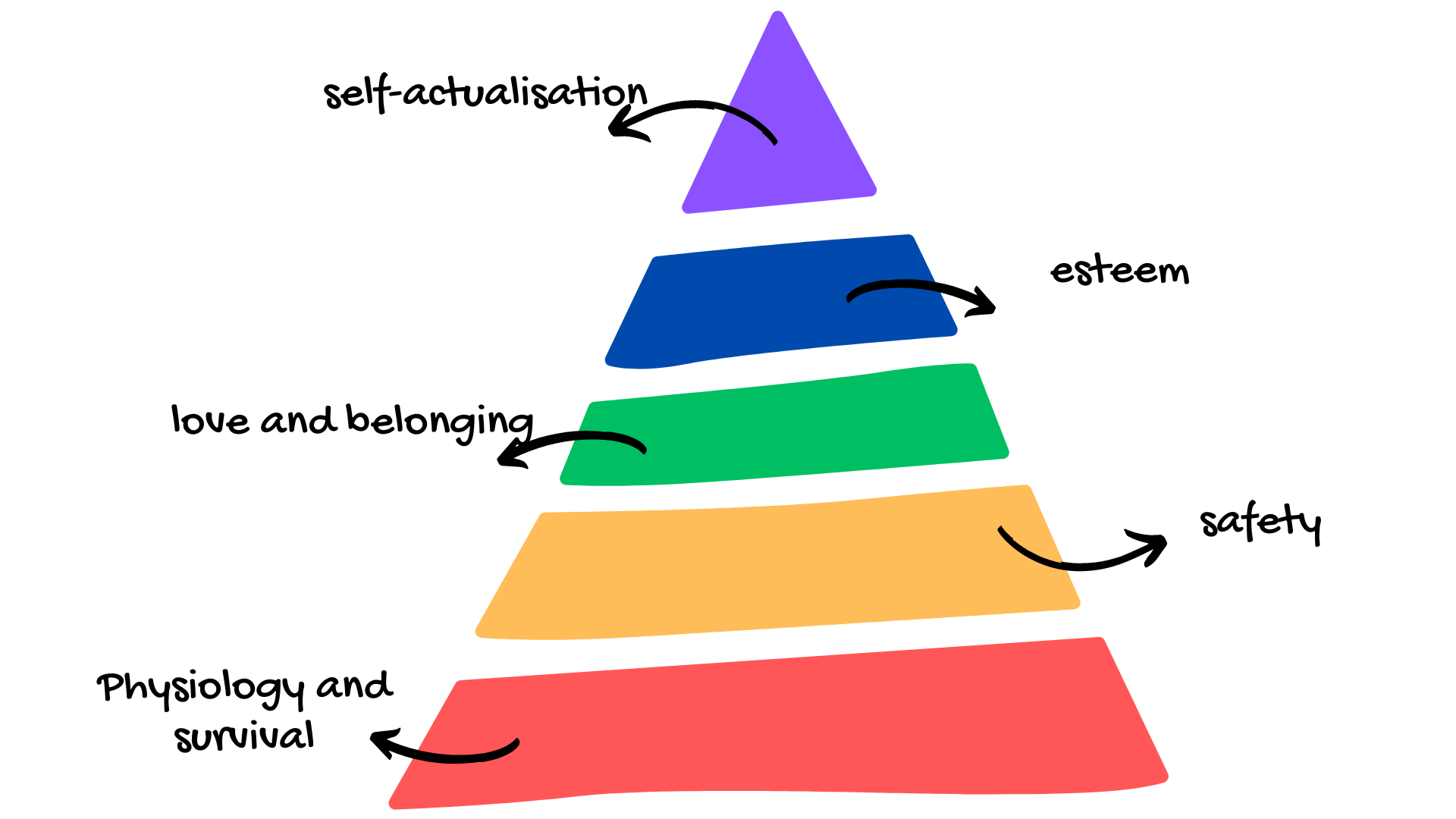Data strategy in your company’s hierarchy of needs

Your shareholders and your boss have been mulling over the idea for some time, even though subconsciously. So you can really make their and your lives easier by putting it on the table. Shedding light onto something that has been lurking in the background trying to come through is very satisfying. Furthermore, they will relate immediately. This is because you will be using a model that we all internalised back in the past but did not make much conscious use ever since.
You pull out an image a three year old can understand. It’s a layered triangle. A pyramide. Your audience is hooked as their brains just released a tiny dose of dopamine to reward them for recognising a Maslow’s Hierarchy of Needs in front of them. Now everyone is curious what this has to do with the business you all are running.

And you keep them curious by doing a brief detour into how to make use of the pyramide model before announcing the key question over which you will be arguing for the next half-an-hour.
How it works
The main idea is that until we satisfy our “lower” needs it is hard for us to articulate our “higher”-order needs—let alone satisfy them. The risk of trying to get ahead of ourselves is the risk of acting out of illusion, which would inevitably lead to a need for a correction sooner or later and thus would slow us down in the long run. The leaking bucket metaphor describes the same situation well.
Placing yourself on the pyramide
With theorising being out of the way, you can now proceed with the real question. Is data strategy something we should be actually paying attention to?
Work your way up the hierarchy to see where your company currently fits best.
Physiological needs
This one is the easiest. I never saw a company that was due to collapse by the end of the week without external help due to the lack of a clearly defined data strategy. Please let me know if you find one!
Safety needs
In my opinion 80% of the companies fall into this category.They already have a product and paying customers. So do all the competitors.
And that’s where the marketing bullshit-bingo begins. Data quickly turns into something that suddenly “enables” you. Out of nowhere it should start supporting your business decision-making. And should you miss the point of becoming data-driven—the wrath of the market would be upon you together with a flood of competition gnashing their teeth on your profits.
Addressing the competition question from the stage usually brings failure. What you should actually be doing at this point is start becoming aware that your data is your asset. Should you not have a clear idea of how it contributes to the overall business-strategy, yet—it is the right time to make sure that, at the very least, you have someone who keeps it safe and tidy. This is the exact reason why data people in companies from this stage get frustrated with their work not being valued enough.
Love and belonging
Companies at this stage manage to focus on their customer—as opposed to anything else. They really really really want the customer to love them. It is now when most executives remember the data asset up their sleeve. The topic of data starts trickling into the boardroom discussions. People from the data department start getting recognition and intention. Things start happening. Happy times.
Many companies get stuck here. Making data work within a company is not easy. Nor is it simple.
A good example of a company getting stuck at this level are the multiple attempts to change their approach to dealing with data, which usually goes along with replacing entire data teams. The company is mature enough to admit that there is a problem they struggle to address, but not mature enough to recognize that the problem lies in the boardroom—not in the data department.
Esteem
Very few companies get here. That’s when a company becomes truly “data-driven” and thus does not feel a need to push this label in all of its marketing materials. In this tier everyone loves you— customers, investors, data professionals. Happy times one more time. In a slightly different way though.
At this level data becomes a “common knowledge”—in both the boardroom and departments. People making strategic and tactical decisions use insights from data teams as one of the pillars for reasoning about what and how they do. People from operational departments have easy access to data they find useful for their day-to-day life. And should they have a bright, data-backed, idea on how to improve their departments work they have an opportunity to request help from the data teams.
Self-actualization
In my life I was lucky enough to talk to a self-actualized person or two. If the feat of self-actualization is “technically” possible for the entire company is an open question. It’s easy enough to match different levels of organisational maturity and content of its employees, customers, and stakeholders to the previous four levels. What lies beyond is an open question. A question I might explore in podcast-style discussion later.
Next steps
The elephant in the room has been revealed. An insight or two must have taken place and shared excitedly among the participants. This under the cover data strategy session has put you in a meta position, from which you were able to see where you stand with data and what route you want to take next. Don’t worry about the technicalities. You and your team will figure it out. With a little bit of external help, if needed. Having a clear understanding of what you are doing and why beats the how every day of the week. Remember to return to your metaphorical control room regularly. That’s where real progress happens.
